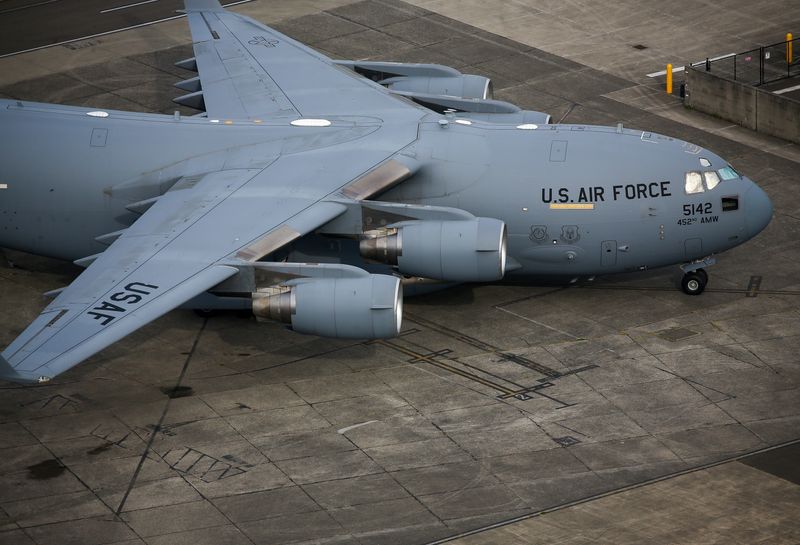WASHINGTON (Reuters) - The U.S. military will start carrying out airdrops of food and supplies into Gaza in the coming days, joining other countries like France, Jordan and Egypt that have done the same.
HOW WOULD AN AIRDROP OF AID WORK?
The United States will use military aircraft to drop supplies over Gaza. While it is unclear which type of aircraft will be used, the C-17 and C-130 are best suited for the job. According to the U.S. Air Force, a C-130 can hold 16 pallets while a C-17 can carry 40.
Military personnel on the ground load supplies onto the pallets, which are then loaded onto planes, and locked in place.
Once the aircraft is over the area where the supplies are needed, the lock holding them in place is released and they sail to the ground with the help of a parachute attached to the pallet.
WHAT ARE THE RISKS?
While the military can look at weather patterns ahead of time, the wind plays a large role in ensuring that they land where they should. Social media videos have shown some aid delivered by other countries ending up in the sea.
Gaza is densely populated and officials say it will be difficult to ensure that the aid reaches the people who need it and doesn't end up in some place that is unreachable.
"It is extremely difficult to do an airdrop in such a crowded environment as is Gaza," John Kirby (NYSE:KEX), President Joe Biden's top national security spokesperson, said.
Officials also say that without a U.S. military presence on the ground, there is no guarantee that the aid will not end up in the hands of Hamas.
WHAT ARE SOME EXAMPLES OF PAST U.S. AIRDROPS?
Each year over Christmas, it drops humanitarian aid to remote islands in the Pacific Ocean in an effort known as "Operation Christmas Drop."
In 2014, the United States military airdropped aid in northern Iraq, when civilians were trapped by Islamic State fighters. In those few months, more than 100,000 meals and 96,000 water bottles were airdropped.
WHAT ARE OPTIONS ARE BEING LOOKED AT?
On Friday, President Joe Biden told reporters that the U.S. was also looking at the possibility of a maritime corridor to deliver large amounts of aid into Gaza.
A U.S. official said one possible option is shipping aid by sea from Cyprus, some 210 nautical miles off Gaza's Mediterranean coast.
No decision has been made on military involvement in such an operation, said the official, adding the Israelis were "very receptive" to the sealift option because it would avoid delays from protesters blocking land crossings to aid convoys.
But the reality is that the maritime option using the military is highly challenging, with no clear location where the aid could be unloaded from ships.
